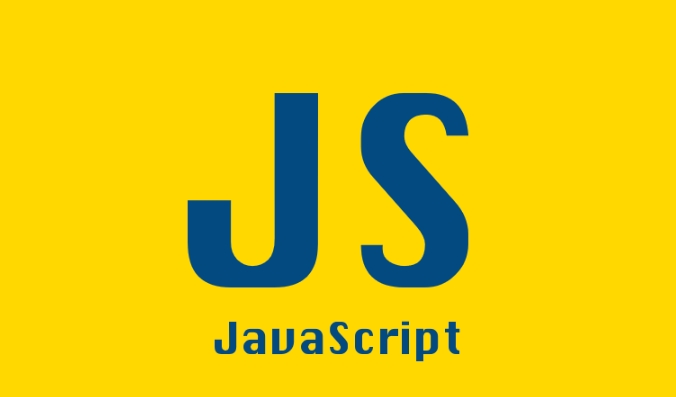JavaScript Destructuring: Objects and Arrays Explained
Jul 09, 2025 am 01:40 AMJavaScript deconstruction assignment can extract data from arrays or objects and assign values ??to variables, making the code more concise and clear. 1. Object deconstruction can directly extract attributes, such as const {name, age} = user; 2. Support renaming attributes and setting default values, such as const {name: userName, gender = 'unknown'} = user; 3. Array deconstruction takes values ??in index order, and certain elements can be skipped, such as const [,, third] = colors; 4. Deconstruction can be used to exchange variables and function parameters, such as function connect({host, port = 3000}) combined with default values ??to make the interface clearer. Mastering these key points can help write more maintainable code.

JavaScript's Destructuring Assignment is a very practical feature. It allows you to extract data from arrays or objects and assign values ??to variables, with a simpler writing and clearer semantics. Many people feel a little confused when they first come into contact, but in fact, after understanding it, you will find that it is really convenient.

Let’s talk about how to use deconstruction of objects and arrays, as well as some small details you may encounter.
Object destruction: Easily extract the properties you need
The most common use of object destruction is to quickly extract certain properties from an object. for example:

const user = { name: 'Alice', age: 25, role: 'admin' };
const { name, age } = user;
console.log(name); // Alice This writing is much simpler than const name = user.name , especially when you need to take multiple attributes.
If you want to change the attribute name to a variable name, it is also possible:

const { name: userName, age: userAge } = user;The default values ??are also useful, especially when dealing with properties that may not exist:
const { gender = 'unknown' } = user; // gender does not exist, so the default is 'unknown'
Note: If your object level is deep, nested deconstruction is also OK, but it is recommended not to be too deep, otherwise it will affect readability.
Array deconstruction: Take values ??in order, skip unwanted elements
Array deconstruction extracts values ??in index order. for example:
const colors = ['red', 'green', 'blue']; const [first, second] = colors; console.log(first); // red
You can skip the middle element by leaving it blank:
const [,, third] = colors; // Skip the first two and get blue directly
Another common scenario is to exchange variables, no temporary variables are needed:
let a = 1, b = 2; [a, b] = [b, a]; // a becomes 2, b becomes 1
The default values ??are also supported:
const [x = 10, y = 20] = [5]; // x=5, y=20
Deconstruction in function parameters: make the interface clearer
Deconstruction is particularly useful in function parameters, especially when passing configuration objects or options:
function connect({ host, port = 3000 }) {
console.log(`Connecting to ${host}:${port}`);
}
connect({ host: 'localhost' }); // Connecting to localhost:3000This not only uses object deconstruction, but also combines default values, which are clear and flexible in logic.
If the parameters may be missing, remember to add the default value to prevent errors:
function connect({ host = 'localhost', port = 3000 } = {}) { ... }Otherwise, an error will occur when the entire parameter is not passed.
Basically that's it.
Deconstruction may seem simple, but mastering it will make your code cleaner and easier to maintain. At first, I may feel a little unfamiliar, so I will be able to write a few more times. Remember a few key points: objects are taken according to attribute names, arrays are taken in order, and function parameters are very good to use with default values.
The above is the detailed content of JavaScript Destructuring: Objects and Arrays Explained. For more information, please follow other related articles on the PHP Chinese website!

Hot AI Tools

Undress AI Tool
Undress images for free

Undresser.AI Undress
AI-powered app for creating realistic nude photos

AI Clothes Remover
Online AI tool for removing clothes from photos.

Clothoff.io
AI clothes remover

Video Face Swap
Swap faces in any video effortlessly with our completely free AI face swap tool!

Hot Article

Hot Tools

Notepad++7.3.1
Easy-to-use and free code editor

SublimeText3 Chinese version
Chinese version, very easy to use

Zend Studio 13.0.1
Powerful PHP integrated development environment

Dreamweaver CS6
Visual web development tools

SublimeText3 Mac version
God-level code editing software (SublimeText3)

Hot Topics
 JavaScript vs. Java: Which Language Should You Learn?
Jun 10, 2025 am 12:05 AM
JavaScript vs. Java: Which Language Should You Learn?
Jun 10, 2025 am 12:05 AM
JavaScriptisidealforwebdevelopment,whileJavasuitslarge-scaleapplicationsandAndroiddevelopment.1)JavaScriptexcelsincreatinginteractivewebexperiencesandfull-stackdevelopmentwithNode.js.2)Javaisrobustforenterprisesoftwareandbackendsystems,offeringstrong
 Which Comment Symbols to Use in JavaScript: A Clear Explanation
Jun 12, 2025 am 10:27 AM
Which Comment Symbols to Use in JavaScript: A Clear Explanation
Jun 12, 2025 am 10:27 AM
In JavaScript, choosing a single-line comment (//) or a multi-line comment (//) depends on the purpose and project requirements of the comment: 1. Use single-line comments for quick and inline interpretation; 2. Use multi-line comments for detailed documentation; 3. Maintain the consistency of the comment style; 4. Avoid over-annotation; 5. Ensure that the comments are updated synchronously with the code. Choosing the right annotation style can help improve the readability and maintainability of your code.
 The Ultimate Guide to JavaScript Comments: Enhance Code Clarity
Jun 11, 2025 am 12:04 AM
The Ultimate Guide to JavaScript Comments: Enhance Code Clarity
Jun 11, 2025 am 12:04 AM
Yes,JavaScriptcommentsarenecessaryandshouldbeusedeffectively.1)Theyguidedevelopersthroughcodelogicandintent,2)arevitalincomplexprojects,and3)shouldenhanceclaritywithoutclutteringthecode.
 Java vs. JavaScript: Clearing Up the Confusion
Jun 20, 2025 am 12:27 AM
Java vs. JavaScript: Clearing Up the Confusion
Jun 20, 2025 am 12:27 AM
Java and JavaScript are different programming languages, each suitable for different application scenarios. Java is used for large enterprise and mobile application development, while JavaScript is mainly used for web page development.
 Javascript Comments: short explanation
Jun 19, 2025 am 12:40 AM
Javascript Comments: short explanation
Jun 19, 2025 am 12:40 AM
JavaScriptcommentsareessentialformaintaining,reading,andguidingcodeexecution.1)Single-linecommentsareusedforquickexplanations.2)Multi-linecommentsexplaincomplexlogicorprovidedetaileddocumentation.3)Inlinecommentsclarifyspecificpartsofcode.Bestpractic
 Mastering JavaScript Comments: A Comprehensive Guide
Jun 14, 2025 am 12:11 AM
Mastering JavaScript Comments: A Comprehensive Guide
Jun 14, 2025 am 12:11 AM
CommentsarecrucialinJavaScriptformaintainingclarityandfosteringcollaboration.1)Theyhelpindebugging,onboarding,andunderstandingcodeevolution.2)Usesingle-linecommentsforquickexplanationsandmulti-linecommentsfordetaileddescriptions.3)Bestpracticesinclud
 JavaScript Data Types: A Deep Dive
Jun 13, 2025 am 12:10 AM
JavaScript Data Types: A Deep Dive
Jun 13, 2025 am 12:10 AM
JavaScripthasseveralprimitivedatatypes:Number,String,Boolean,Undefined,Null,Symbol,andBigInt,andnon-primitivetypeslikeObjectandArray.Understandingtheseiscrucialforwritingefficient,bug-freecode:1)Numberusesa64-bitformat,leadingtofloating-pointissuesli
 JavaScript vs. Java: A Comprehensive Comparison for Developers
Jun 20, 2025 am 12:21 AM
JavaScript vs. Java: A Comprehensive Comparison for Developers
Jun 20, 2025 am 12:21 AM
JavaScriptispreferredforwebdevelopment,whileJavaisbetterforlarge-scalebackendsystemsandAndroidapps.1)JavaScriptexcelsincreatinginteractivewebexperienceswithitsdynamicnatureandDOMmanipulation.2)Javaoffersstrongtypingandobject-orientedfeatures,idealfor







